#if 0 int GetFirstK(int* data, int length, int k, int start, int end); int GetLastK(int* data, int length, int k, int start, int end); int GetNumberOfK(int* data, int length, int k) { if(data==0||length<=0) return 0; int first=GetFirstK(data,length,k,0,length-1); int last=GetLastK(data,length,k,0,length-1); if(first>=0&&last>=0) return last-first+1; return 0; } int GetFirstK(int* data, int length, int k, int start, int end){ if(start>end) return -1; int mid=(start+end)/2; if(data[mid]==k){ if(mid==0||mid>0&&data[mid-1]!=k) return mid; end=mid-1; } else if(data[mid]>k) end=mid-1; else start=mid+1; return GetFirstK(data,length,k,start,end); } int GetLastK(int* data, int length, int k, int start, int end){ if(start>end) return -1; int mid=(start+end)/2; if(data[mid]==k){ if(mid==length-1||mid<length-1&&data[mid+1]!=k) return mid; start=mid+1; } else if(data[mid]>k) end=mid-1; else start=mid+1; return GetLastK(data,length,k,start,end); } // ====================测试代码==================== void Test(char* testName, int data[], int length, int k, int expected) { if(testName != NULL) printf("%s begins: ", testName); int result = GetNumberOfK(data, length, k); if(result == expected) printf("Passed.\n"); else printf("Failed.\n"); } // 查找的数字出现在数组的中间 void Test1() { int data[] = {1, 2, 3, 3, 3, 3, 4, 5}; Test("Test1", data, sizeof(data) / sizeof(int), 3, 4); } // 查找的数组出现在数组的开头 void Test2() { int data[] = {3, 3, 3, 3, 4, 5}; Test("Test2", data, sizeof(data) / sizeof(int), 3, 4); } // 查找的数组出现在数组的结尾 void Test3() { int data[] = {1, 2, 3, 3, 3, 3}; Test("Test3", data, sizeof(data) / sizeof(int), 3, 4); } // 查找的数字不存在 void Test4() { int data[] = {1, 3, 3, 3, 3, 4, 5}; Test("Test4", data, sizeof(data) / sizeof(int), 2, 0); } // 查找的数字比第一个数字还小,不存在 void Test5() { int data[] = {1, 3, 3, 3, 3, 4, 5}; Test("Test5", data, sizeof(data) / sizeof(int), 0, 0); } // 查找的数字比最后一个数字还大,不存在 void Test6() { int data[] = {1, 3, 3, 3, 3, 4, 5}; Test("Test6", data, sizeof(data) / sizeof(int), 6, 0); } // 数组中的数字从头到尾都是查找的数字 void Test7() { int data[] = {3, 3, 3, 3}; Test("Test7", data, sizeof(data) / sizeof(int), 3, 4); } // 数组中的数字从头到尾只有一个重复的数字,不是查找的数字 void Test8() { int data[] = {3, 3, 3, 3}; Test("Test8", data, sizeof(data) / sizeof(int), 4, 0); } // 数组中只有一个数字,是查找的数字 void Test9() { int data[] = {3}; Test("Test9", data, sizeof(data) / sizeof(int), 3, 1); } // 数组中只有一个数字,不是查找的数字 void Test10() { int data[] = {3}; Test("Test10", data, sizeof(data) / sizeof(int), 4, 0); } // 鲁棒性测试,数组空指针 void Test11() { Test("Test11", NULL, 0, 0, 0); } int main(int argc, char* argv[]) { Test1(); Test2(); Test3(); Test4(); Test5(); Test6(); Test7(); Test8(); Test9(); Test10(); Test11(); return 0; } #endif
#if 0 int TreeDepth(BinaryTreeNode* pRoot) { if(pRoot == NULL) return 0; int nLeft = TreeDepth(pRoot->m_pLeft); int nRight = TreeDepth(pRoot->m_pRight); return (nLeft > nRight) ? (nLeft + 1) : (nRight + 1); } // ====================测试代码==================== void Test(BinaryTreeNode* pRoot, int expected) { int result = TreeDepth(pRoot); if(expected == result) printf("Test passed.\n"); else printf("Test failed.\n"); } // 1 // / \ // 2 3 // /\ \ // 4 5 6 // / // 7 void Test1() { printf("Test1 begins.\n"); BinaryTreeNode* pNode1 = CreateBinaryTreeNode(1); BinaryTreeNode* pNode2 = CreateBinaryTreeNode(2); BinaryTreeNode* pNode3 = CreateBinaryTreeNode(3); BinaryTreeNode* pNode4 = CreateBinaryTreeNode(4); BinaryTreeNode* pNode5 = CreateBinaryTreeNode(5); BinaryTreeNode* pNode6 = CreateBinaryTreeNode(6); BinaryTreeNode* pNode7 = CreateBinaryTreeNode(7); ConnectTreeNodes(pNode1, pNode2, pNode3); ConnectTreeNodes(pNode2, pNode4, pNode5); ConnectTreeNodes(pNode3, NULL, pNode6); ConnectTreeNodes(pNode5, pNode7, NULL); Test(pNode1, 4); DestroyTree(pNode1); } // 1 // / // 2 // / // 3 // / // 4 // / // 5 void Test2() { printf("Test2 begins.\n"); BinaryTreeNode* pNode1 = CreateBinaryTreeNode(1); BinaryTreeNode* pNode2 = CreateBinaryTreeNode(2); BinaryTreeNode* pNode3 = CreateBinaryTreeNode(3); BinaryTreeNode* pNode4 = CreateBinaryTreeNode(4); BinaryTreeNode* pNode5 = CreateBinaryTreeNode(5); ConnectTreeNodes(pNode1, pNode2, NULL); ConnectTreeNodes(pNode2, pNode3, NULL); ConnectTreeNodes(pNode3, pNode4, NULL); ConnectTreeNodes(pNode4, pNode5, NULL); Test(pNode1, 5); DestroyTree(pNode1); } // 1 // \ // 2 // \ // 3 // \ // 4 // \ // 5 void Test3() { printf("Test3 begins.\n"); BinaryTreeNode* pNode1 = CreateBinaryTreeNode(1); BinaryTreeNode* pNode2 = CreateBinaryTreeNode(2); BinaryTreeNode* pNode3 = CreateBinaryTreeNode(3); BinaryTreeNode* pNode4 = CreateBinaryTreeNode(4); BinaryTreeNode* pNode5 = CreateBinaryTreeNode(5); ConnectTreeNodes(pNode1, NULL, pNode2); ConnectTreeNodes(pNode2, NULL, pNode3); ConnectTreeNodes(pNode3, NULL, pNode4); ConnectTreeNodes(pNode4, NULL, pNode5); Test(pNode1, 5); DestroyTree(pNode1); } // 树中只有1个结点 void Test4() { printf("Test4 begins.\n"); BinaryTreeNode* pNode1 = CreateBinaryTreeNode(1); Test(pNode1, 1); DestroyTree(pNode1); } // 树中没有结点 void Test5() { printf("Test5 begins.\n"); Test(NULL, 0); } int main(int argc, char* argv[]) { Test1(); Test2(); Test3(); Test4(); Test5(); return 0; } #endif
#if 0 // ====================方法1==================== int TreeDepth(BinaryTreeNode* pRoot){ if(pRoot==0) return 0; int left=TreeDepth(pRoot->m_pLeft); int right=TreeDepth(pRoot->m_pRight); return (left>right?left:right)+1; } bool IsBalanced_Solution1(BinaryTreeNode* pRoot){ if(pRoot==0) return true; int left=TreeDepth(pRoot->m_pLeft), right=TreeDepth(pRoot->m_pRight); int diff=left-right; if(diff>1||diff<-1) return false; return IsBalanced_Solution1(pRoot->m_pLeft)&& IsBalanced_Solution1(pRoot->m_pRight); } // ====================方法2==================== bool IsBalanced(BinaryTreeNode* pRoot, int* pDepth); bool IsBalanced_Solution2(BinaryTreeNode* pRoot) { int depth=0; return IsBalanced(pRoot,&depth); } bool IsBalanced(BinaryTreeNode* pRoot, int* pDepth){ if(pRoot==0){ *pDepth=0; return true; } int left=0,right=0; if(IsBalanced(pRoot->m_pLeft,&left)&& IsBalanced(pRoot->m_pRight,&right)){ int diff=left-right; if(diff<=1&&diff>=-1){ *pDepth=(left>right?left:right)+1; return true; } } return false; } // ====================测试代码==================== void Test(char* testName, BinaryTreeNode* pRoot, bool expected) { if(testName != NULL) printf("%s begins:\n", testName); printf("Solution1 begins: "); if(IsBalanced_Solution1(pRoot) == expected) printf("Passed.\n"); else printf("Failed.\n"); printf("Solution2 begins: "); if(IsBalanced_Solution2(pRoot) == expected) printf("Passed.\n"); else printf("Failed.\n"); } // 完全二叉树 // 1 // / \ // 2 3 // /\ / \ // 4 5 6 7 void Test1() { BinaryTreeNode* pNode1 = CreateBinaryTreeNode(1); BinaryTreeNode* pNode2 = CreateBinaryTreeNode(2); BinaryTreeNode* pNode3 = CreateBinaryTreeNode(3); BinaryTreeNode* pNode4 = CreateBinaryTreeNode(4); BinaryTreeNode* pNode5 = CreateBinaryTreeNode(5); BinaryTreeNode* pNode6 = CreateBinaryTreeNode(6); BinaryTreeNode* pNode7 = CreateBinaryTreeNode(7); ConnectTreeNodes(pNode1, pNode2, pNode3); ConnectTreeNodes(pNode2, pNode4, pNode5); ConnectTreeNodes(pNode3, pNode6, pNode7); Test("Test1", pNode1, true); DestroyTree(pNode1); } // 不是完全二叉树,但是平衡二叉树 // 1 // / \ // 2 3 // /\ \ // 4 5 6 // / // 7 void Test2() { BinaryTreeNode* pNode1 = CreateBinaryTreeNode(1); BinaryTreeNode* pNode2 = CreateBinaryTreeNode(2); BinaryTreeNode* pNode3 = CreateBinaryTreeNode(3); BinaryTreeNode* pNode4 = CreateBinaryTreeNode(4); BinaryTreeNode* pNode5 = CreateBinaryTreeNode(5); BinaryTreeNode* pNode6 = CreateBinaryTreeNode(6); BinaryTreeNode* pNode7 = CreateBinaryTreeNode(7); ConnectTreeNodes(pNode1, pNode2, pNode3); ConnectTreeNodes(pNode2, pNode4, pNode5); ConnectTreeNodes(pNode3, NULL, pNode6); ConnectTreeNodes(pNode5, pNode7, NULL); Test("Test2", pNode1, true); DestroyTree(pNode1); } // 不是平衡二叉树 // 1 // / \ // 2 3 // /\ // 4 5 // / // 6 void Test3() { BinaryTreeNode* pNode1 = CreateBinaryTreeNode(1); BinaryTreeNode* pNode2 = CreateBinaryTreeNode(2); BinaryTreeNode* pNode3 = CreateBinaryTreeNode(3); BinaryTreeNode* pNode4 = CreateBinaryTreeNode(4); BinaryTreeNode* pNode5 = CreateBinaryTreeNode(5); BinaryTreeNode* pNode6 = CreateBinaryTreeNode(6); ConnectTreeNodes(pNode1, pNode2, pNode3); ConnectTreeNodes(pNode2, pNode4, pNode5); ConnectTreeNodes(pNode5, pNode6, NULL); Test("Test3", pNode1, false); DestroyTree(pNode1); } // 1 // / // 2 // / // 3 // / // 4 // / // 5 void Test4() { BinaryTreeNode* pNode1 = CreateBinaryTreeNode(1); BinaryTreeNode* pNode2 = CreateBinaryTreeNode(2); BinaryTreeNode* pNode3 = CreateBinaryTreeNode(3); BinaryTreeNode* pNode4 = CreateBinaryTreeNode(4); BinaryTreeNode* pNode5 = CreateBinaryTreeNode(5); ConnectTreeNodes(pNode1, pNode2, NULL); ConnectTreeNodes(pNode2, pNode3, NULL); ConnectTreeNodes(pNode3, pNode4, NULL); ConnectTreeNodes(pNode4, pNode5, NULL); Test("Test4", pNode1, false); DestroyTree(pNode1); } // 1 // \ // 2 // \ // 3 // \ // 4 // \ // 5 void Test5() { BinaryTreeNode* pNode1 = CreateBinaryTreeNode(1); BinaryTreeNode* pNode2 = CreateBinaryTreeNode(2); BinaryTreeNode* pNode3 = CreateBinaryTreeNode(3); BinaryTreeNode* pNode4 = CreateBinaryTreeNode(4); BinaryTreeNode* pNode5 = CreateBinaryTreeNode(5); ConnectTreeNodes(pNode1, NULL, pNode2); ConnectTreeNodes(pNode2, NULL, pNode3); ConnectTreeNodes(pNode3, NULL, pNode4); ConnectTreeNodes(pNode4, NULL, pNode5); Test("Test5", pNode1, false); DestroyTree(pNode1); } // 树中只有1个结点 void Test6() { BinaryTreeNode* pNode1 = CreateBinaryTreeNode(1); Test("Test6", pNode1, true); DestroyTree(pNode1); } // 树中没有结点 void Test7() { Test("Test7", NULL, true); } int main(int argc, char* argv[]) { Test1(); Test2(); Test3(); Test4(); Test5(); Test6(); Test7(); return 0; } #endif
代码如下:
#if 0 unsigned int FindFirstBitIs1(int num); bool IsBit1(int num, unsigned int indexBit); void FindNumsAppearOnce(int data[], int length, int* num1, int* num2){ if(data==0||length<=0) return; unsigned int s=0; for(int i=0;i<length;i++) s^=data[i]; unsigned int pos=FindFirstBitIs1(s); *num1=0,*num2=0; for(int i=0;i<length;i++){ if(IsBit1(data[i],pos)) *num1^=data[i]; else *num2^=data[i]; } } unsigned int FindFirstBitIs1(int num){ int pos=0; while(pos<sizeof(int)*4){ if(num&(0x1<<pos)) break; else pos++; } return pos; } bool IsBit1(int num,unsigned int indexBit){ return num&(0x1<<indexBit); } // ====================测试代码==================== void Test(char* testName, int data[], int length, int expected1, int expected2) { if(testName != NULL) printf("%s begins: ", testName); int result1, result2; FindNumsAppearOnce(data, length, &result1, &result2); if((expected1 == result1 && expected2 == result2) || (expected2 == result1 && expected1 == result2)) printf("Passed.\n\n"); else printf("Failed.\n\n"); } void Test1() { int data[] = {2, 4, 3, 6, 3, 2, 5, 5}; Test("Test1", data, sizeof(data) / sizeof(int), 4, 6); } void Test2() { int data[] = {4, 6}; Test("Test2", data, sizeof(data) / sizeof(int), 4, 6); } void Test3() { int data[] = {4, 6, 1, 1, 1, 1}; Test("Test3", data, sizeof(data) / sizeof(int), 4, 6); } int main(int argc, char* argv[]) { Test1(); Test2(); Test3(); return 0; } #endif
代码如下:
#if 0 bool FindNumbersWithSum(int data[], int length, int sum, int* num1, int* num2) { if(data==0||length<=0||num1==0||num2==0) return false; int i=0,j=length-1; int s; while(i<j){ s=data[i]+data[j]; if(s==sum){ *num1=data[i]; *num2=data[j]; return true; } else if(s<sum){ i++; } else j--; } return false; } // ====================测试代码==================== void Test(char* testName, int data[], int length, int sum, bool expectedReturn) { if(testName != NULL) printf("%s begins: ", testName); int num1, num2; int result = FindNumbersWithSum(data, length, sum, &num1, &num2); if(result == expectedReturn) { if(result) { if(num1 + num2 == sum) printf("Passed. \n"); else printf("Failed. \n"); } else printf("Passed. \n"); } else printf("Failed. \n"); } // 存在和为s的两个数字,这两个数字位于数组的中间 void Test1() { int data[] = {1, 2, 4, 7, 11, 15}; Test("Test1", data, sizeof(data) / sizeof(int), 15, true); } // 存在和为s的两个数字,这两个数字位于数组的两段 void Test2() { int data[] = {1, 2, 4, 7, 11, 16}; Test("Test2", data, sizeof(data) / sizeof(int), 17, true); } // 不存在和为s的两个数字 void Test3() { int data[] = {1, 2, 4, 7, 11, 16}; Test("Test3", data, sizeof(data) / sizeof(int), 10, false); } // 鲁棒性测试 void Test4() { Test("Test4", NULL, 0, 0, false); } int main(int argc, char* argv[]) { Test1(); Test2(); Test3(); Test4(); return 0; } #endif
代码如下:
#if 0 void PrintContinuousSequence(int small, int big); void FindContinuousSequence(int sum){ if(sum<3) return; int t1=1,t2=2; int mid=(1+sum)/2; int curSum=t1+t2; while(t1<mid){ if(curSum==sum) { PrintContinuousSequence(t1,t2); curSum-=t1; t1++; } else if(curSum<sum) { t2++; curSum+=t2; } else { curSum-=t1; t1++; } } } void PrintContinuousSequence(int small, int big) { for(int i = small; i <= big; ++ i) printf("%d ", i); printf("\n"); } // ====================测试代码==================== void Test(char* testName, int sum) { if(testName != NULL) printf("%s for %d begins: \n", testName, sum); FindContinuousSequence(sum); } int main(int argc, char* argv[]) { Test("test1", 1); Test("test2", 3); Test("test3", 4); Test("test4", 9); Test("test5", 15); Test("test6", 100); return 0; } #endif
代码如下:
void Reverse(char*s,char*t){ while(s<t){ swap(*s,*t); s++,t--; } } #if 0 void ReverseSentence(char *str){ if(str==0) return ; char *s,*t; int len=strlen(str); printf("%s\n",str); Reverse(str,str+len-1); printf("%s\n",str); s=t=str; while(*s!='\0'){ if(*s==' '){ s++,t++; } else if(*t==' '||*t=='\0'){ Reverse(s,--t); s=++t; } else t++; } } // ====================测试代码==================== void Test(char* testName, char* input, char* expectedResult) { if(testName != NULL) printf("%s begins: ", testName); ReverseSentence(input); if((input == NULL && expectedResult == NULL) || (input != NULL && strcmp(input, expectedResult) == 0)) printf("Passed.\n\n"); else printf("Failed.\n\n"); } // 功能测试,句子中有多个单词 void Test1() { char input[] = "I am a student."; char expected[] = "student. a am I"; Test("Test1", input, expected); } // 功能测试,句子中只有一个单词 void Test2() { char input[] = "Wonderful"; char expected[] = "Wonderful"; Test("Test2", input, expected); } // 鲁棒性测试 void Test3() { Test("Test3", NULL, NULL); } // 边界值测试,测试空字符串 void Test4() { Test("Test4", "", ""); } // 边界值测试,字符串中只有空格 void Test5() { char input[] = " "; char expected[] = " "; Test("Test5", input, expected); } int main(int argc, char* argv[]) { Test1(); Test2(); Test3(); Test4(); Test5(); return 0; } #endif
代码如下:
#if 0 char* LeftRotateString(char* pStr, int n) { if(pStr != NULL) { int nLength = static_cast<int>(strlen(pStr)); if(nLength > 0 && n > 0 && n < nLength) { char* pFirstStart = pStr; char* pFirstEnd = pStr + n - 1; char* pSecondStart = pStr + n; char* pSecondEnd = pStr + nLength - 1; // 翻转字符串的前面n个字符 Reverse(pFirstStart, pFirstEnd); // 翻转字符串的后面部分 Reverse(pSecondStart, pSecondEnd); // 翻转整个字符串 Reverse(pFirstStart, pSecondEnd); } } return pStr; } // ====================测试代码==================== void Test(char* testName, char* input, int num, char* expectedResult) { if(testName != NULL) printf("%s begins: ", testName); char* result = LeftRotateString(input, num); if((input == NULL && expectedResult == NULL) || (input != NULL && strcmp(result, expectedResult) == 0)) printf("Passed.\n\n"); else printf("Failed.\n\n"); } // 功能测试 void Test1() { char input[] = "abcdefg"; char expected[] = "cdefgab"; Test("Test1", input, 2, expected); } // 边界值测试 void Test2() { char input[] = "abcdefg"; char expected[] = "bcdefga"; Test("Test2", input, 1, expected); } // 边界值测试 void Test3() { char input[] = "abcdefg"; char expected[] = "gabcdef"; Test("Test3", input, 6, expected); } // 鲁棒性测试 void Test4() { Test("Test4", NULL, 6, NULL); } // 鲁棒性测试 void Test5() { char input[] = "abcdefg"; char expected[] = "abcdefg"; Test("Test5", input, 0, expected); } // 鲁棒性测试 void Test6() { char input[] = "abcdefg"; char expected[] = "abcdefg"; Test("Test6", input, 7, expected); } int main(int argc, char* argv[]) { Test1(); Test2(); Test3(); Test4(); Test5(); Test6(); return 0; } #endif
#if 0 // ====================方法一==================== void Probability(int n, int current, int sum, int* pProbabilities); void PrintProbability_Solution1(int n) { if(n<=0) return; int maxSum=6*n; // int sz=6*n-n+1; int *pro=new int[maxSum+1]; for(int i=1;i<=maxSum;i++) pro[i]=0; for(int i=1;i<=6;i++) Probability(n,n,i,pro); double total=pow((double)6,n); for(int i=n;i<=maxSum;i++){ double p=pro[i]/total; printf("%d: %e\n",i,p); } delete[] pro; } void Probability(int n,int c,int sum,int *pro){ if(c==1){ pro[sum]++; } else{ for(int i=1;i<=6;i++) Probability(n,c-1,i+sum,pro); } } void PrintProbability_Solution2(int n) { if(n<=0) return; int *pro[2]; pro[0]=new int[6*n+1]; pro[1]=new int[6*n+1]; for(int i=0;i<=6*n;i++) pro[0][i]=pro[1][i]=0; int flag=0; for(int i=1;i<=6;i++) pro[flag][i]=1; for(int k=2;k<=n;k++){ for(int i=0;i<k;i++) pro[1-flag][i]=0; for(int i=k;i<=6*k;i++){ int cnt=0; for(int j=1;j<=i&&j<=6;j++) cnt+=pro[flag][i-j]; pro[1-flag][i]=cnt; } flag=1-flag; } double total=pow((double)6,n); for(int i=n;i<=6*n;i++) { double p=pro[flag][i]/total; printf("%d: %e\n",i,p); } delete[] pro[0]; delete[] pro[1]; } // ====================测试代码==================== void Test(int n) { printf("Test for %d begins:\n", n); printf("Test for solution1\n"); PrintProbability_Solution1(n); printf("Test for solution2\n"); PrintProbability_Solution2(n); printf("\n"); } int main(int argc, char* argv[]) { Test(1); Test(2); Test(3); Test(4); Test(11); Test(0); return 0; } #endif
代码如下:
#if 0 bool IsContinuous(int* a, int n) { if(a==0||n<=0) return false; int cnt_zero=0; int gap=0; for(int i=0;i<n;i++) if(a[i]==0) cnt_zero++; sort(a,a+n); int i=cnt_zero; for(;i<n-1;i++){ if(a[i]==a[i+1]) return false; gap+=a[i+1]-a[i]-1; } return cnt_zero>=gap; } // ====================测试代码==================== void Test(char* testName, int* numbers, int length, bool expected) { if(testName != NULL) printf("%s begins: ", testName); if(IsContinuous(numbers, length) == expected) printf("Passed.\n"); else printf("Failed.\n"); } void Test1() { int numbers[] = {1, 3, 2, 5, 4}; Test("Test1", numbers, sizeof(numbers) / sizeof(int), true); } void Test2() { int numbers[] = {1, 3, 2, 6, 4}; Test("Test2", numbers, sizeof(numbers) / sizeof(int), false); } void Test3() { int numbers[] = {0, 3, 2, 6, 4}; Test("Test3", numbers, sizeof(numbers) / sizeof(int), true); } void Test4() { int numbers[] = {0, 3, 1, 6, 4}; Test("Test4", numbers, sizeof(numbers) / sizeof(int), false); } void Test5() { int numbers[] = {1, 3, 0, 5, 0}; Test("Test5", numbers, sizeof(numbers) / sizeof(int), true); } void Test6() { int numbers[] = {1, 3, 0, 7, 0}; Test("Test6", numbers, sizeof(numbers) / sizeof(int), false); } void Test7() { int numbers[] = {1, 0, 0, 5, 0}; Test("Test7", numbers, sizeof(numbers) / sizeof(int), true); } void Test8() { int numbers[] = {1, 0, 0, 7, 0}; Test("Test8", numbers, sizeof(numbers) / sizeof(int), false); } void Test9() { int numbers[] = {3, 0, 0, 0, 0}; Test("Test9", numbers, sizeof(numbers) / sizeof(int), true); } void Test10() { int numbers[] = {0, 0, 0, 0, 0}; Test("Test10", numbers, sizeof(numbers) / sizeof(int), true); } // 有对子 void Test11() { int numbers[] = {1, 0, 0, 1, 0}; Test("Test11", numbers, sizeof(numbers) / sizeof(int), false); } // 鲁棒性测试 void Test12() { Test("Test12", NULL, 0, false); } int main(int argc, char* argv[]) { Test1(); Test2(); Test3(); Test4(); Test5(); Test6(); Test7(); Test8(); Test9(); Test10(); Test11(); Test12(); return 0; } #endif
代码如下:
#if 0 // ====================方法1==================== int LastRemaining_Solution1(unsigned int n, unsigned int m){ if(n<1||m<1) return -1; list<int> lst; for(int i=0;i<n;i++) lst.push_back(i); list<int>::iterator current=lst.begin(); list<int>::iterator next; while(lst.size()>1){ for(int i=1;i<m;i++){ ++current; if(current==lst.end()) current=lst.begin(); } next=++current; if(next==lst.end()) next=lst.begin(); --current; lst.erase(current); current=next; } return *current; } // ====================方法2==================== int LastRemaining_Solution2(unsigned int n, unsigned int m){ if(n<1||m<1) return -1; int last=0; for(int i=2;i<=n;i++) last=(last+m)%i; return last; } // ====================测试代码==================== void Test(char* testName, unsigned int n, unsigned int m, int expected) { if(testName != NULL) printf("%s begins: \n", testName); if(LastRemaining_Solution1(n, m) == expected) printf("Solution1 passed.\n"); else printf("Solution1 failed.\n"); if(LastRemaining_Solution2(n, m) == expected) printf("Solution2 passed.\n"); else printf("Solution2 failed.\n"); printf("\n"); } void Test1() { Test("Test1", 5, 3, 3); } void Test2() { Test("Test2", 5, 2, 2); } void Test3() { Test("Test3", 6, 7, 4); } void Test4() { Test("Test4", 6, 6, 3); } void Test5() { Test("Test5", 0, 0, -1); } void Test6() { Test("Test6", 4000, 997, 1027); } int main(int argc, char* argv[]) { Test1(); Test2(); Test3(); Test4(); Test5(); Test6(); return 0; } #endif
代码如下:
#if 0 class A{ public: A(){ ++N; sum+=N; } static void Reset(){N=0;sum=0;} static int GetSum(){ return sum; } public: static int N; static int sum; }; int A::N=0; int A::sum=0; int Sum_Solution1(int n) { A::Reset(); A *pa=new A[n]; delete[] pa; return A::GetSum(); } class C1; C1* arr[2]; class C1{ public: virtual int sum(int n){ return 0; } }; class C2:public C1{ public: int sum(int n){ return arr[!!n]->sum(n-1)+n; } }; int Sum_Solution2(int n) { C1 cc1; C2 cc2; arr[0]=&cc1; arr[1]=&cc2; return arr[1]->sum(n); } typedef int (*fun)(int); int f1(int n){ return 0; } int Sum_Solution3(int n) { static fun f[2]={f1,Sum_Solution3}; return n+f[!!n](n-1); } template <int n> struct Sum_Solution4 { enum {N=Sum_Solution4<n-1>::N+n}; }; template <> struct Sum_Solution4<1>{ enum {N=1}; }; template <> struct Sum_Solution4<0>{ enum {N=0}; }; // ====================测试代码==================== void Test(int n, int expected) { printf("Test for %d begins:\n", n); if(Sum_Solution1(n) == expected) printf("Solution1 passed.\n"); else printf("Solution1 failed.\n"); if(Sum_Solution2(n) == expected) printf("Solution2 passed.\n"); else printf("Solution2 failed.\n"); if(Sum_Solution3(n) == expected) printf("Solution3 passed.\n"); else printf("Solution3 failed.\n"); } void Test1() { const unsigned int number = 1; int expected = 1; Test(number, expected); if(Sum_Solution4<number>::N == expected) printf("Solution4 passed.\n"); else printf("Solution4 failed.\n"); } void Test2() { const unsigned int number = 5; int expected = 15; Test(number, expected); if(Sum_Solution4<number>::N == expected) printf("Solution4 passed.\n"); else printf("Solution4 failed.\n"); } void Test3() { const unsigned int number = 10; int expected = 55; Test(number, expected); if(Sum_Solution4<number>::N == expected) printf("Solution4 passed.\n"); else printf("Solution4 failed.\n"); } void Test4() { const unsigned int number = 0; int expected = 0; Test(number, expected); if(Sum_Solution4<number>::N == expected) printf("Solution4 passed.\n"); else printf("Solution4 failed.\n"); } int main(int argc, char* argv[]) { Test1(); Test2(); Test3(); Test4(); return 0; } #endif
代码如下:
#if 0 int Add(int num1, int num2) { int sum; int carry; do{ sum=num1^num2; carry=(num1&num2)<<1; num1=sum; num2=carry; }while(num2!=0); return sum; } // ====================测试代码==================== void Test(int num1, int num2, int expected) { int result = Add(num1, num2); if(result == expected) printf("%d + %d is %d. Passed\n", num1, num2, result); else printf("%d + %d is %d. Failed\n", num1, num2, result); } int main(int argc, char* argv[]) { Test(1, 2, 3); Test(111, 899, 1010); Test(-1, 2, 1); Test(1, -2, -1); Test(3, 0, 3); Test(0, -4, -4); Test(-2, -8, -10); } #endif
代码如下:
#if 0 // ====================方法一==================== class SealedClass1 { public: static SealedClass1* GetInstance() { return new SealedClass1(); } static void DeleteInstance( SealedClass1* pInstance) { delete pInstance; } private: SealedClass1() {} ~SealedClass1() {} }; // 如果试图从SealedClass1继承出新的类型, // 将会导致编译错误。 /* class Try1 : public SealedClass1 { public: Try1() {} ~Try1() {} }; */ // ====================方法二==================== template <typename T> class MakeSealed { friend T; private: MakeSealed() {} ~MakeSealed() {} }; class SealedClass2 : virtual public MakeSealed<SealedClass2> { public: SealedClass2() {} ~SealedClass2() {} }; // 如果试图从SealedClass1继承出新的类型, // 将会导致编译错误。 /* class Try2 : public SealedClass2 { public: Try2() {} ~Try2() {} }; */ int main(int argc, char* argv[]) { return 0; } #endif
面试题49 将字符串转化为整数
#if 0 long long StrToIntCore(const char* str, bool minus); enum Status {kValid = 0, kInvalid}; int g_nStatus = kValid; int StrToInt(const char* str) { g_nStatus = kInvalid; long long num = 0; if(str != NULL && *str != '\0') { bool minus = false; if(*str == '+') str ++; else if(*str == '-') { str ++; minus = true; } if(*str != '\0') { num = StrToIntCore(str, minus); } } return (int)num; } long long StrToIntCore(const char* digit, bool minus) { long long num = 0; while(*digit != '\0') { if(*digit >= '0' && *digit <= '9') { int flag = minus ? -1 : 1; num = num * 10 + flag * (*digit - '0'); if((!minus && num > 0x7FFFFFFF) || (minus && num < (signed int)0x80000000)) { num = 0; break; } digit++; } else { num = 0; break; } } if(*digit == '\0') { g_nStatus = kValid; } return num; } // ====================测试代码==================== void Test(char* string) { int result = StrToInt(string); if(result == 0 && g_nStatus == kInvalid) printf("the input %s is invalid.\n", string); else printf("number for %s is: %d.\n", string, result); } int main(int argc, char* argv[]) { Test(NULL); Test(""); Test("123"); Test("+123"); Test("-123"); Test("1a33"); Test("+0"); Test("-0"); //有效的最大正整数, 0x7FFFFFFF Test("+2147483647"); Test("-2147483647"); Test("+2147483648"); //有效的最小负整数, 0x80000000 Test("-2147483648"); Test("+2147483649"); Test("-2147483649"); Test("+"); Test("-"); return 0; } #endif
struct TreeNode { int m_nValue; std::vector<TreeNode*> m_vChildren; }; TreeNode* CreateTreeNode(int value) { TreeNode* pNode = new TreeNode(); pNode->m_nValue = value; return pNode; } void ConnectTreeNodes(TreeNode* pParent, TreeNode* pChild) { if(pParent != NULL) { pParent->m_vChildren.push_back(pChild); } } void PrintTreeNode(TreeNode* pNode) { if(pNode != NULL) { printf("value of this node is: %d.\n", pNode->m_nValue); printf("its children is as the following:\n"); std::vector<TreeNode*>::iterator i = pNode->m_vChildren.begin(); while(i < pNode->m_vChildren.end()) { if(*i != NULL) printf("%d\t", (*i)->m_nValue); } printf("\n"); } else { printf("this node is null.\n"); } printf("\n"); } void PrintTree(TreeNode* pRoot) { PrintTreeNode(pRoot); if(pRoot != NULL) { std::vector<TreeNode*>::iterator i = pRoot->m_vChildren.begin(); while(i < pRoot->m_vChildren.end()) { PrintTree(*i); ++i; } } } void DestroyTree(TreeNode* pRoot) { if(pRoot != NULL) { std::vector<TreeNode*>::iterator i = pRoot->m_vChildren.begin(); while(i < pRoot->m_vChildren.end()) { DestroyTree(*i); ++i; } delete pRoot; } } #if 1 bool GetNodePath(TreeNode* pRoot, TreeNode* pNode, list<TreeNode*>& path) { if(pRoot == pNode) return true; path.push_back(pRoot); bool found = false; vector<TreeNode*>::iterator i = pRoot->m_vChildren.begin(); while(!found && i < pRoot->m_vChildren.end()) { found = GetNodePath(*i, pNode, path); ++i; } if(!found) path.pop_back(); return found; } TreeNode* GetLastCommonNode ( const list<TreeNode*>& path1, const list<TreeNode*>& path2 ) { list<TreeNode*>::const_iterator iterator1 = path1.begin(); list<TreeNode*>::const_iterator iterator2 = path2.begin(); TreeNode* pLast = NULL; while(iterator1 != path1.end() && iterator2 != path2.end()) { if(*iterator1 == *iterator2) pLast = *iterator1; iterator1++; iterator2++; } return pLast; } TreeNode* GetLastCommonParent(TreeNode* pRoot, TreeNode* pNode1, TreeNode* pNode2) { if(pRoot == NULL || pNode1 == NULL || pNode2 == NULL) return NULL; list<TreeNode*> path1; GetNodePath(pRoot, pNode1, path1); list<TreeNode*> path2; GetNodePath(pRoot, pNode2, path2); return GetLastCommonNode(path1, path2); } // ====================测试代码==================== void Test(char* testName, TreeNode* pRoot, TreeNode* pNode1, TreeNode* pNode2, TreeNode* pExpected) { if(testName != NULL) printf("%s begins: \n", testName); TreeNode* pResult = GetLastCommonParent(pRoot, pNode1, pNode2); if((pExpected == NULL && pResult == NULL) || (pExpected != NULL && pResult != NULL && pResult->m_nValue == pExpected->m_nValue)) printf("Passed.\n"); else printf("Failed.\n"); } // 形状普通的树 // 1 // / \ // 2 3 // / \ // 4 5 // / \ / | \ // 6 7 8 9 10 void Test1() { TreeNode* pNode1 = CreateTreeNode(1); TreeNode* pNode2 = CreateTreeNode(2); TreeNode* pNode3 = CreateTreeNode(3); TreeNode* pNode4 = CreateTreeNode(4); TreeNode* pNode5 = CreateTreeNode(5); TreeNode* pNode6 = CreateTreeNode(6); TreeNode* pNode7 = CreateTreeNode(7); TreeNode* pNode8 = CreateTreeNode(8); TreeNode* pNode9 = CreateTreeNode(9); TreeNode* pNode10 = CreateTreeNode(10); ConnectTreeNodes(pNode1, pNode2); ConnectTreeNodes(pNode1, pNode3); ConnectTreeNodes(pNode2, pNode4); ConnectTreeNodes(pNode2, pNode5); ConnectTreeNodes(pNode4, pNode6); ConnectTreeNodes(pNode4, pNode7); ConnectTreeNodes(pNode5, pNode8); ConnectTreeNodes(pNode5, pNode9); ConnectTreeNodes(pNode5, pNode10); Test("Test1", pNode1, pNode6, pNode8, pNode2); } // 树退化成一个链表 // 1 // / // 2 // / // 3 // / // 4 // / // 5 void Test2() { TreeNode* pNode1 = CreateTreeNode(1); TreeNode* pNode2 = CreateTreeNode(2); TreeNode* pNode3 = CreateTreeNode(3); TreeNode* pNode4 = CreateTreeNode(4); TreeNode* pNode5 = CreateTreeNode(5); ConnectTreeNodes(pNode1, pNode2); ConnectTreeNodes(pNode2, pNode3); ConnectTreeNodes(pNode3, pNode4); ConnectTreeNodes(pNode4, pNode5); Test("Test2", pNode1, pNode5, pNode4, pNode3); } // 树退化成一个链表,一个结点不在树中 // 1 // / // 2 // / // 3 // / // 4 // / // 5 void Test3() { TreeNode* pNode1 = CreateTreeNode(1); TreeNode* pNode2 = CreateTreeNode(2); TreeNode* pNode3 = CreateTreeNode(3); TreeNode* pNode4 = CreateTreeNode(4); TreeNode* pNode5 = CreateTreeNode(5); ConnectTreeNodes(pNode1, pNode2); ConnectTreeNodes(pNode2, pNode3); ConnectTreeNodes(pNode3, pNode4); ConnectTreeNodes(pNode4, pNode5); TreeNode* pNode6 = CreateTreeNode(6); Test("Test3", pNode1, pNode5, pNode6, NULL); } // 输入NULL void Test4() { Test("Test4", NULL, NULL, NULL, NULL); } int main(int argc, char* argv[]) { Test1(); Test2(); Test3(); Test4(); return 0; } #endif












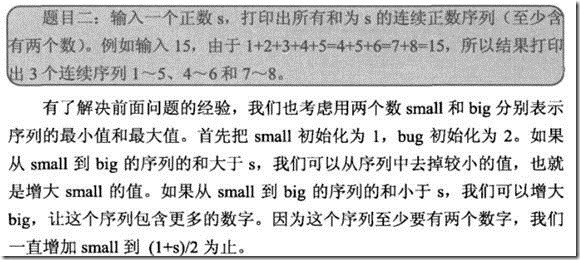





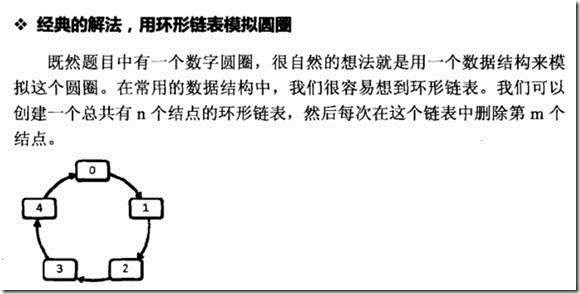
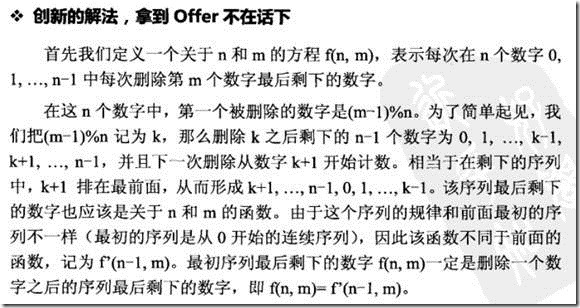
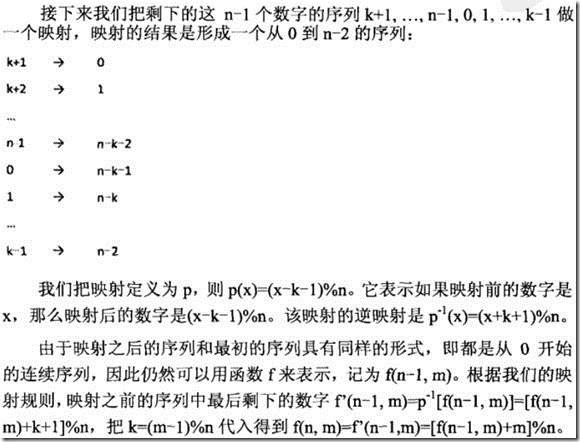



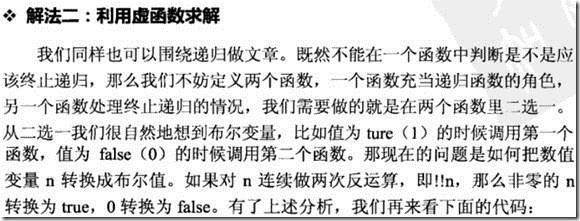




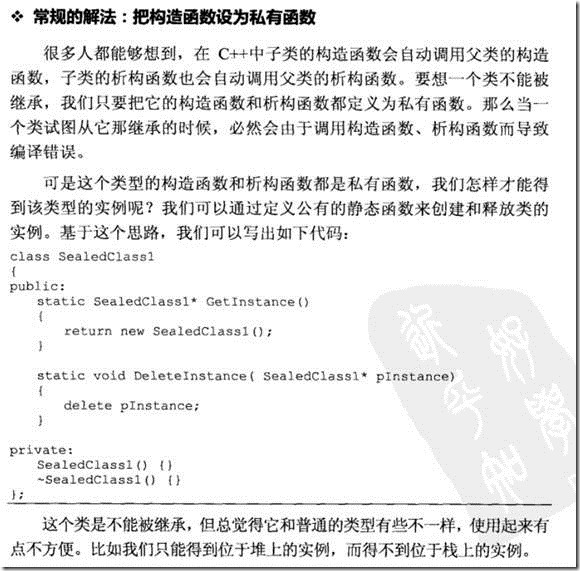
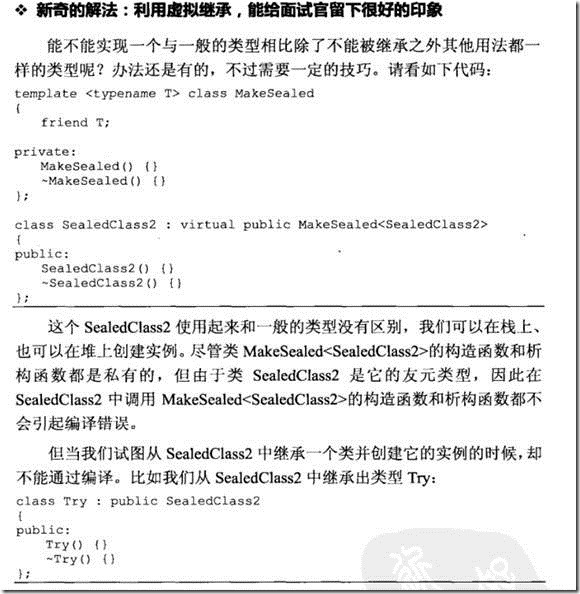
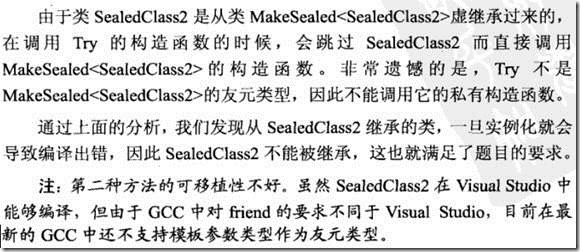















 983
983

 被折叠的 条评论
为什么被折叠?
被折叠的 条评论
为什么被折叠?








